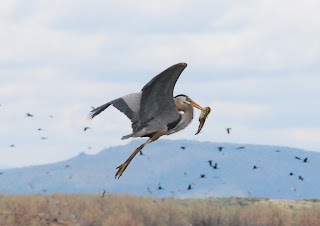I love the Mountain Bluebirds. One of the first traditions I remember growing up in Teton Valley was when the first Bluebird showed up, Mom would make us homemade donuts. We called them Spudnuts, because they were made from water saved over from boiling potatoes. It was the best springtime treat - almost as good as Christmas.
First the flocks of males would show up, staking out their territory.
The female join them about a week later and pick out a nesting place. Boxes are great.
Then the courtship begins - the sly smiles and glances followed by "accidental" bumping and touching. Finally full blown romance.
A few weeks later out in a near by tree are two offspring of the two sparkers. It takes both parent full time to feed themselves and their "teen-agers."
Now being empty nesters, the Mom has time to primp and rearrange her feathers. They split the nest and she was getting cleaned up for a date.
Mr. looked a little lost with her getting ready to go out - without him. Happens all the time after a males luster fades.
Spring will come again next year and with it new romances and a new coat of brilliant blue duds. Find a smile.
I know it is fiction, but it sure was fun. They are still very beautiful and some of my favorites.







































